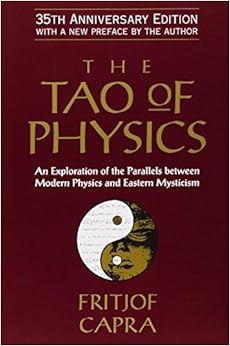

Buddhism, and Taoism, as if all three shared the same conclusions. In general, Capra’s thesis seems sensible, though I’m sure sticklers for details would take exception to his lumping together Vedic mysticism. Next, turning to the Eastern tradition, he cites a translation of the Isha Upanishad, Mantra Five: If we ask, for instance, whether the position of (he electron remains the same, we must say ‘no’ if we ask whether the electron’s position changes with time, we must say ‘no’ if we ask whether the electron is at rest, we must say ‘no’ if we ask whether it is in motion, we must say ‘no.’ The first is from Robert Oppenheimer’s Science and the Common Understanding: He cites the following two references to typify the kind of agreement he sees between the Oriental and the Occidental world views.

Capra, a high-energy physicist with a long-standing interest in Eastern philosophy, finds it significant that physicists’ descriptions of the paradoxical subatomic reality they seem to have discovered echo the descriptions of reality given by the mystics of various traditions, namely, the Vedic tradition of India, the Buddhist tradition, and the Taoist tradition of China. Over the past six or seven years I’ve met many people, mostly college students, who’ve read Fritjof Capra’s The Tao of Physics, a bestseller about the apparent parallels between Eastern mysticism and modern physics. But there’s more in the Vedic version than is dreamt of in Capra’s philosophy. Fritjof Capra’s bestseller points to apparent parallels between Eastern mysticism and the new physics.


 0 kommentar(er)
0 kommentar(er)
